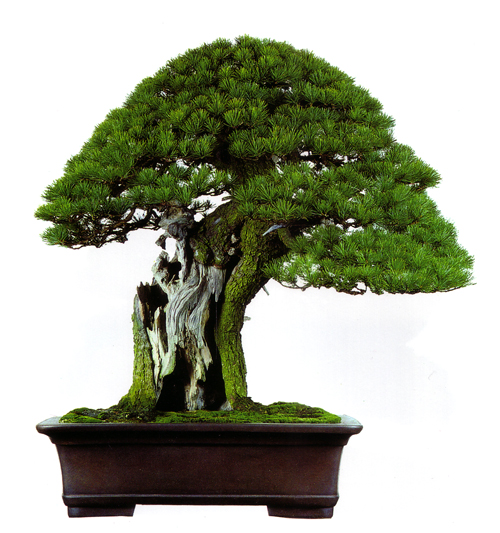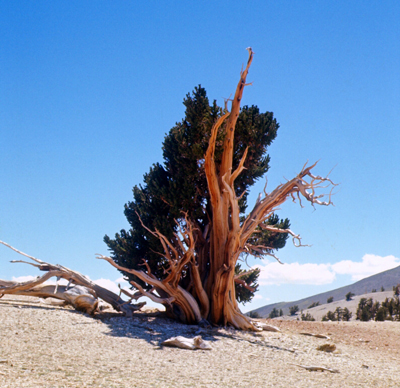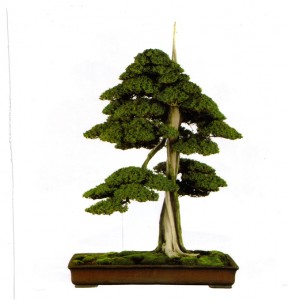
This classic Japanese white pine (Pinus parviflora) shows all three types of deadwood: sabamiki (hollow trunk), shari (deadwood on the trunk) and jin (dead branches or dead treetop; if you look closely you’ll see a few little dead branches sticking out). The tree is from our Pocket Bonsai Gallery (it originally appeared on the cover on Bonsai Today issue 43).
Backing up and starting over
Even though we’ve already posted a couple times on the topic, I’ve decided to go back to the beginning for those of you who don’t know much about deadwood on bonsai. If you’ve been around the deadwood block, then stay posted for some meatier stuff soon.
It started with Mother Nature
The idea for using deadwood in bonsai comes from nature. In fact, if you look around, it’s everywhere. Especially on conifers, where deadwood tends to last longer.

It would be very difficult to improve upon this ancient Bristlecone pine‘s (Pinus aristata) magnificent deadwood. Several thousand years of wind, sun, blowing sand, snow, rain, ice and almost everything else in Mother Nature’s arsenal, have created a masterpiece no human hand could ever duplicate. You can go take a look if you want the full effect; it resides in the Inyo National Forest in California.
Naturally occurring or by human hand (or both)
Many collected bonsai (and an occasional nursery plant) have natural deadwood (particularly noteworthy are the famous collected junipers from Japan). Usually, this natural deadwood is enhanced (or least altered) by carving. The other way deadwood occurs is to make it by killing branches or tree tops (jin) or sections of trunks (shari), or even carving out hollows in trunks (sabamiki). We’ll get into how to do these dirty deeds on some upcoming posts.
 This Needle juniper (Juniperus rigida) has a tree top jin and shari that runs up the entire length of the trunk. In fact, it looks as though the two might be one continuous strip of deadwood. This much deadwood does not pose a health problem, provided that there is at least one living vein from the roots to the foliage. In this case, you can see at least two living veins. The tree is from our Pocket Bonsai Gallery (it originally appeared on the cover on Bonsai Today issue 81).
This Needle juniper (Juniperus rigida) has a tree top jin and shari that runs up the entire length of the trunk. In fact, it looks as though the two might be one continuous strip of deadwood. This much deadwood does not pose a health problem, provided that there is at least one living vein from the roots to the foliage. In this case, you can see at least two living veins. The tree is from our Pocket Bonsai Gallery (it originally appeared on the cover on Bonsai Today issue 81).
Previous posts on deadwood are here and here.
Stay posted for more on the topic.